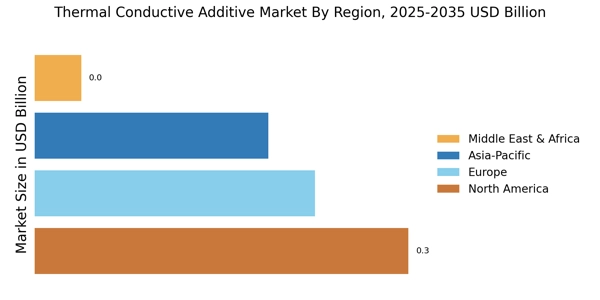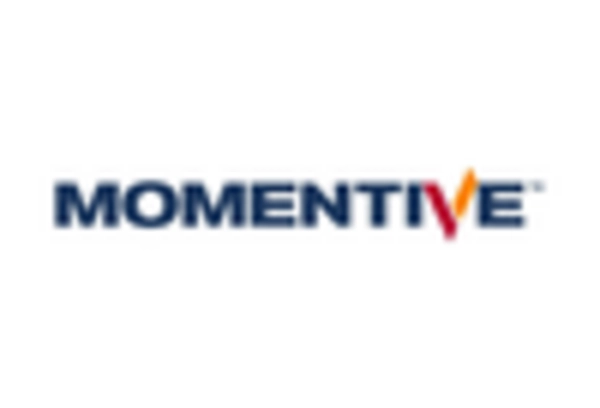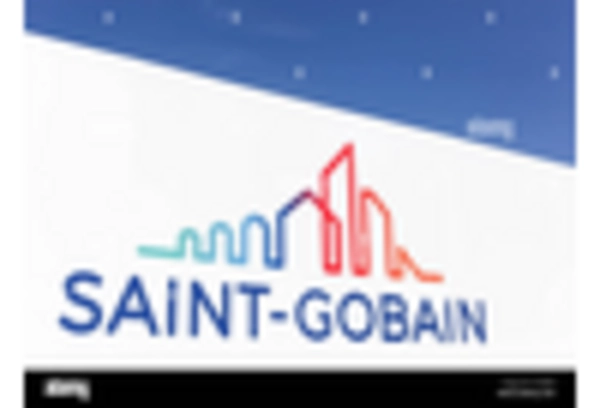Regulatory Push for Energy Efficiency
Regulatory frameworks aimed at promoting energy efficiency are emerging as a significant driver for the Thermal Conductive Additive Market. Governments worldwide are implementing stringent regulations to reduce energy consumption and greenhouse gas emissions. This regulatory push is compelling manufacturers to adopt materials that enhance thermal management in their products. For example, energy efficiency standards in building materials are becoming more rigorous, leading to increased demand for thermal conductive additives in insulation and construction applications. As compliance with these regulations becomes essential, the Thermal Conductive Additive Market is expected to experience robust growth.
Growing Focus on Sustainable Materials
The growing focus on sustainable materials is reshaping the Thermal Conductive Additive Market. As environmental concerns gain prominence, manufacturers are increasingly seeking eco-friendly alternatives to traditional thermal conductive additives. This shift is driven by consumer demand for sustainable products and the need to comply with environmental regulations. The market for sustainable materials is projected to grow at a rate of 7% annually, indicating a strong trend towards greener solutions. Consequently, the Thermal Conductive Additive Market is likely to see innovations in bio-based and recyclable materials, aligning with the broader sustainability goals of various industries.
Advancements in Industrial Applications
The Thermal Conductive Additive Market is significantly influenced by advancements in industrial applications. Industries such as aerospace, telecommunications, and renewable energy are increasingly recognizing the importance of thermal management in their operations. For instance, the aerospace sector is projected to grow at a compound annual growth rate of 4.5% through 2025, necessitating the use of high-performance thermal conductive additives in various components. These materials enhance the efficiency and safety of critical systems, thereby driving demand. As industries continue to innovate and seek improved thermal solutions, the Thermal Conductive Additive Market is likely to expand accordingly.
Increasing Adoption of Electric Vehicles
The rising adoption of electric vehicles (EVs) is a pivotal driver for the Thermal Conductive Additive Market. As manufacturers strive to enhance battery performance and thermal management, the demand for effective thermal conductive additives is expected to surge. In 2025, the EV market is projected to grow significantly, with estimates suggesting that over 30 million units will be sold annually. This growth necessitates advanced materials that can efficiently dissipate heat, thereby improving battery life and safety. Consequently, the Thermal Conductive Additive Market is likely to witness increased investments in research and development to create innovative solutions tailored for the automotive sector.
Expansion of Electronics and Consumer Goods
The proliferation of electronics and consumer goods is another critical driver for the Thermal Conductive Additive Market. With the continuous miniaturization of electronic devices, there is an escalating need for materials that can effectively manage heat dissipation. The electronics sector is anticipated to reach a market value exceeding 1 trillion by 2025, which will likely propel the demand for thermal conductive additives. These materials are essential in ensuring the reliability and longevity of devices such as smartphones, laptops, and gaming consoles. As manufacturers prioritize thermal management solutions, the Thermal Conductive Additive Market is poised for substantial growth.


















Leave a Comment